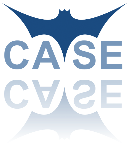News Items
October 2020 - Welcome to the new Committee Chair, Vice-Chair and Education Officer
From 1st October, Dr Heather Venables takes over from Simon Richards as the new CASE Committee Chair.
I have followed the work of CASE closely since its formation in 1993 and became an accreditor in 2007. I joined CASE Committee as a BMUS representative in 2011 and have been Vice Chair since 2019. I am now delighted to have this opportunity to work with colleagues as the next Chair of CASE Committee.
As I step into this role, I am acutely aware that these are times of extraordinary challenge with unrelenting pressure on service delivery and uncertainty about the future impact of COVID-19. Sonography is already a shortage profession and the need to train at scale across all specialties is unquestionable. How we achieve this will require a willingness to consider alternative approaches without losing our commitment to patient safety and quality of care.
One of our biggest challenges is training capacity. Simulation will have an increasingly important role. However, high quality mentored training in clinical placement is central to ensuring the safe use of diagnostic ultrasound across all areas of practice, including point-of-care. In these unprecedented times, making effective use of training resources, providing support for practice-based mentors, and exploring creative ways of expanding capacity has arguably never been more important.
As students return to university, academic colleagues face an immense challenge as learning, teaching and assessment strategies that would normally require face to face contact are adapted for digital delivery. Programme teams are exploring creative and effective ways to ensure that the conditions of their CASE accreditation are met, and students are supported in this transition.
Against this background, CASE has a responsibility to provide assurance that ultrasound trainees completing an accredited course are safe, competent and have a clear and confident understanding of their scope of practice. This is at the heart of why CASE exists. Looking forward, accreditation processes still need to be rigorous, transparent, and attuned to service needs. However, we need to approach this in a way that is supportive of innovation and takes pressure off over-stretched clinical departments and our academic partners. As we all adapt to the impact of the pandemic, I am committed to promoting accreditation systems that are as straightforward as possible and focused on patient safety.
I look forward to working with the Committee, our Member Organisation representatives, and our team of experienced volunteer accreditors to enable CASE to further develop its education and accreditation work to the highest level.
Dr. Heather Venables
October 2020
We also welcome Gareth Bolton (BMUS Rep) as the new Vice-Chair of the CASE Committee and would like to congratulate Gill Dolbear (SCoR Rep) on her recent appointment to the position of CASE Education Officer.
May 2019 - New National Occupational Standards for Sonography published by Skills for Health
Two new 'National Occupational Standards for Sonography' have been published by Skills for Health. CI.C.2019 Perform, interpret and report on ultrasound examinations covers performing, interpreting and reporting on ultrasound images of anatomical structures, whilst CI.I.2019 - Perform image guided procedures and/or interventions covers invasive procedures and/or interventions performed under image guidance. This standard is relevant to various imaging modalities, including ultrasound, and should be used in your area of practice.
These standards can be found at:
- Skills for Health (2019) CI.C.2019 - Perform, interpret and report on ultrasound examinations. [Online]. Available: https://tools.skillsforhealth.org.uk/competence/show/html/id/4302/
- Skills for Health (2019) CI.I.2019 - Perform image guided procedures and/or interventions [Online]. Available: https://tools.skillsforhealth.org.uk/competence/show/html/id/4307/
As a result of the publication of these two new standards, CASE has updated the CASE Handbook and the Standards for Sonographic Education document.A new web-page has been created as a resource for Programme Leads and CASE accreditors where all of the various mapping documents are now located:
November 2018 - Sonographer Workforce Developments
Ultrasound education is undergoing significant and innovative changes. There is a BSc (Hons) Medical Ultrasound programme running in its third year, with students due to quality in Summer 2019 and an apprenticeship standard has been developed for BSc (Hons) in Medical Ultrasound. These new courses are in addition to the many CASE accredited post graduate programmes and focussed courses currently available. To ensure the developments continue to provide high quality ultrasound services to the public there is a vast amount of strategic level work being undertaken by volunteers from a wide range of backgrounds. CASE member organisations are involved in the discussions and working groups, as any changes to education and practice will impact on the role of CASE in assuring the quality of new approaches. A summary of the work to date has been published by the Society and College of Radiographers1 and the British Medical Ultrasound Society (BMUS).2 This report provides a further update on the latest developments.
The ‘Integrated Imaging Workforce Group’, set up by Health Education England (HEE) are overseeing many projects linked to developing the imaging workforce. As part of the work there is a ‘Sonography Steering Group’ who are setting objectives for smaller ‘task and finish’ working groups. The three groups are responsible for pushing forward different aspects of sonographer education and a career framework:
- Sonography Implementation Group are developing a career framework for ultrasound. To date they have approved the ‘Standards for Sonographic Education’ document.3 Current work is looking at defining a career for a four tier ‘profession’ for sonographers. This includes the scope of practice, reporting, accountability and career progression. Linked to this, other work is beginning looking at preceptorship and a capability framework, to support the transition between career levels.
- Sonography Training Group are reviewing options to increase capacity for clinical education, to try and take some of the pressure off over-stretched clinical departments. Several different options are being considered and the plan is to suggest a menu of different possibilities to meet the differing regional requirements. Currently the group are having discussions with colleagues who have already set up ultrasound clinical academies, regional peripatetic education models and ultrasound clinics within universities. Discussions are also taking place with Radiology Academy colleagues, reporting radiographer academies and sonographers in other countries, to share innovative practice.
- Sonography Regulation Group, led by HEE is currently putting together a case for regulation of sonographers. Evidence will be presented to the Professional Standards Authority (PSA), prior to submission to the Department of Health and Social Care for further consideration.
Further dissemination and discussion will take place at the BMUS conference in December 2018 in Manchester, where there are professional issues streams on both Tuesday and Thursday, looking at education, training and professional developments.
References:
- Harrison, G. ‘Sonographer workforce developments.’ 2018. Synergy News, April, pp.12-13. Available: http://openaccess.city.ac.uk/20221/
- Parker, P. ‘Development Officer report.’ 2018. BMUS Summer Newsletter. [Online]. Available:https://www.bmus.org/media/resources/files/BMUS_FINAL_NEW_ADVERTwebpdf.pdf
- CASE. ‘Standards for Sonographic Education.’ 2018. [Online]. Available:http://www.case-uk.org/information/publications/
June 2018 - Standards for Sonographic Education
CASE has published a new guidance document entitled ‘CASE Standards for Sonographic Education’. This document, commissioned by Health Education England as an important step towards meeting the needs of the changing ultrasound education landscape, clearly identifies the standards that need to be met within/through sonographic education and training for non-medical practitioners known as ‘Sonographers’.
It is acknowledged that it is no longer appropriate to restrict ultrasound education and training to current healthcare practitioners such as radiographers and midwives. A long-term, sustainable source of future sonographers is therefore required through a process of direct entry to programmes such as:
- Bachelor of Science e.g. BSc (Hons) Clinical Sonography or BSc (Hons) Medical Ultrasound;
- Apprenticeship in Clinical Sonography or Medical Ultrasound;
- Integrated Masters e.g. MSon (combines undergraduate and postgraduate study into a single four-year programme);
- Master of Science e.g. MSc Clinical Sonography or MSc Medical Ultrasound.
This document was created to provide guidance on educating the future ultrasound workforce, along with learning outcomes for academic levels 6, 7 and 8, as a result of the increasing diversity of ultrasound programmes and courses. It is intended to be used as a resource by ultrasound educators and CASE accreditors; however, we hope it will be of interest to all those involved in the training and education of student sonographers.




